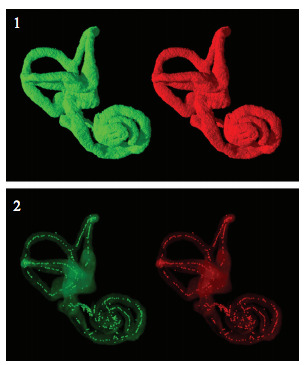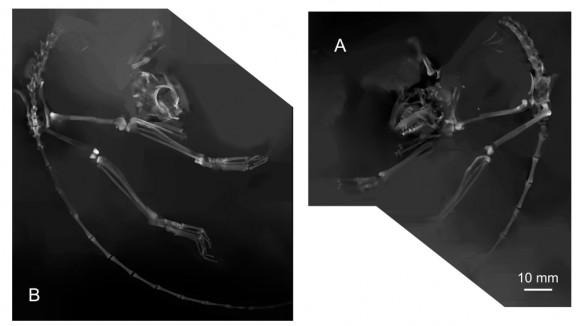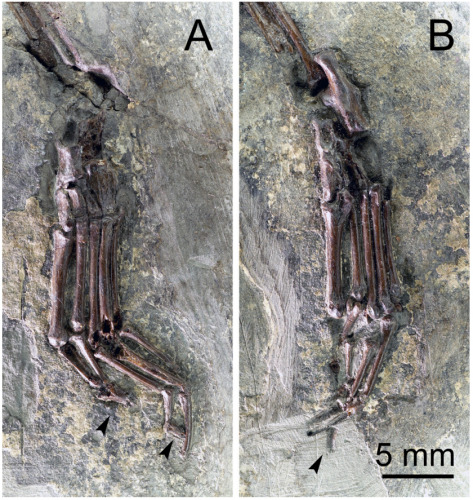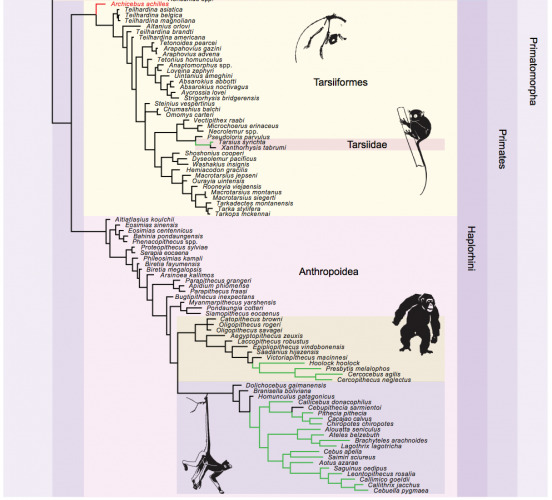Oldest Primate Fossil Found: How These Bones Could Be "Evolutionary"
The creature newly discovered and named Archicebus achilles has become the latest world's oldest primate fossil and may be shedding light on our evolutionary roots soon. In a paper published in Nature, the international weekly journal of science, researchers have made it clear that this find may help fill gaps in the fossil record regarding the earliest phases of primate evolution. Here we're seeing a tiny creature whom paper coauthor and Northern Illinois University researcher Daniel Gebo noted was "particularly interesting [due to] it's completeness."
This creature is the size of a squirrel, essentially, small enough to fit in the palm of your hand. It was found in China's Hubei Province in a lade bed much more well known for turning up ancient fossils of fish than it is for land-bound creatures. Speaking with the International Business Times, Gebo continued:

"If you look at Africa today, the most primitive primates living – lemurs, galagos — live there. But the fossil primates we keep finding in Asia end up being more and more primitive." – Daniel Gebo, researcher at Northern Illinois University
At the moment, the team is working with both the rock the creature was embedded in and the bones of the creature itself. Using advanced CT scanning, a group at the European Synchrotron Radiation Facility (ESRF, Grenoble, France) are making 3D digital models of the creature for later study.
What you're seeing in black, red, and green here is a set of figures created for a previous study on the technology used to scan this new specimen. This image comes from the paper "Imagining the inner ear in fossil mammals: High-resolution CT scanning and 3-D virtual reconstructions", as written in part by Xijun Ni, also an author on this new paper.
Xijun Ni is a researcher with the American Museum of Natural History and the Chinese Academy of Sciences and was also the one able to persuade the local farmer – owner of the land where the fossil was found – to donate it to science.

Archicebus achilles goes by code-name (IVPP V18618) in this particular study.
This team of researchers is calling the Archicebus the earliest member yet found in the tarsier lineage, this hitting rather close to the evolutionary divergence that also splits off into anthropoids. Because of the extreme age of this specimen, researchers are reconsidering what they've until now assumed to be more modern evolutionary bits and pieces of today's ape.

The illustration above shows the bones found in this specimen shaded in darker gray, this having been done by Mat Severson from Northern Illinois University.
The especially large feet of this creature are one of several features assumed to have been adaptations to a more modern environment. Instead, because this creature's legs, skull, teeth, and arms are all clearly so very primitive, it would appear that massive feet have been around quite a bit longer than expected.

This fossil sits on a branch of our evolutionary tree that had until now been empty, here existing along a branch where early primates diverged into anthropoids and Tarsiiformes. The Tarsiiforme family has just the the miniature creature known as the tarsier left to represent it today – only existing on the islands of Southeast Asia at this point in history.

ABOVE: Click for a larger view – here the research team shows where this little fellow falls in the evolutionary history of creatures, right up there beyond the pale.
Anthropoids of course eventually became humans, apes, and monkeys. While the Archicebus achilles here has a long palm bone (metatarsal), tarsiers have elongated heel bones. Scientists are still calling Archicebus a very early member of the tarsier lineage, however, the earliest known member of the Tarsiiforme divergence and the closest we've now gotten to seeing the split.
Imagine that – this 3-inch fuzzball (with a 5-inch tail) appearing first. That's a long way off from what Ridley Scott told us about where humans could have come from, that's for sure.
SOURCE: Nature
